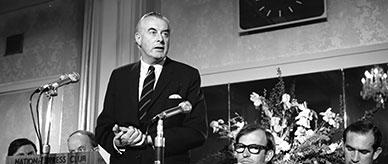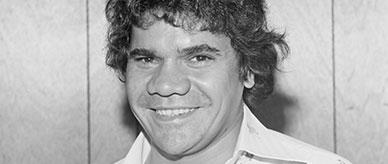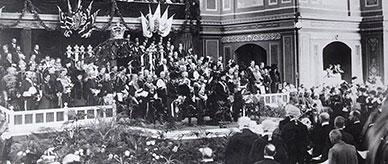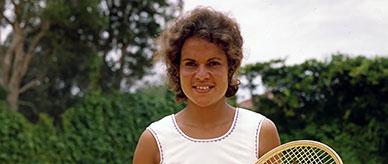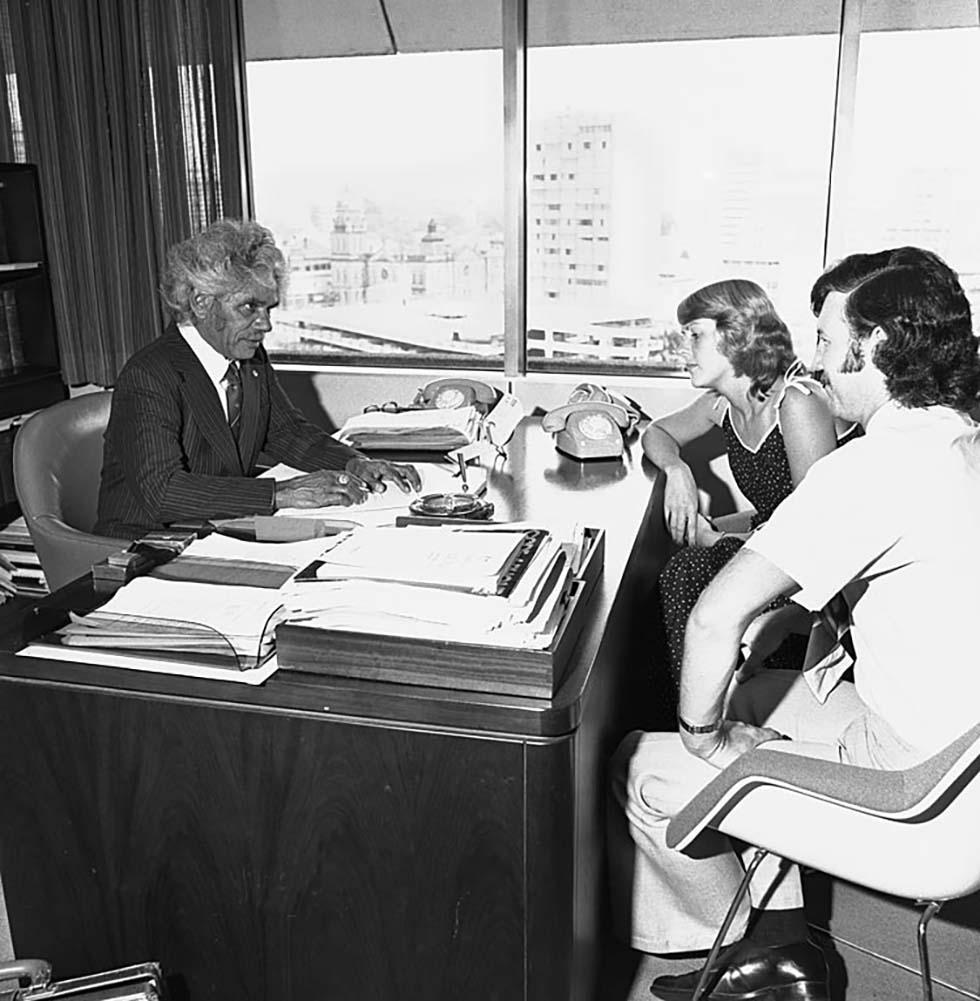


About this record
This black-and-white photograph shows Queensland Senator Neville Bonner with two constituents in his Brisbane office. Bonner, dressed in suit and tie, is seated at his desk and appears to be discussing a document with a man and woman sitting opposite him. On Bonner's desk are trays of documents. The windows along the far wall provide an overexposed view of the city.
Educational value
- Neville Bonner (1922–99) became the first Indigenous person to be elected as a member of the Australian Parliament in 1971. Initially appointed by the Queensland Parliament to fill a casual Senate vacancy, he went on to win in his own right as a Queensland senator in 1972, 1974, 1975 and 1980. He resigned from the Liberal Party after being demoted on the Senate ticket for crossing the floor and stood as an independent in the 1983 election, but narrowly lost his seat.
- Bonner joined the Liberal Party after the 1967 referendum that gave the federal government power to make laws in relation to Indigenous people. He declared that the way to make changes was to get into the system and work through it. He became the first Indigenous member to introduce legislation to parliament, and the first backbencher to introduce a government Bill (the Aboriginal Development Commission Bill).
- Bonner's achievement in rising to high office was made more remarkable by the hardship he experienced in his life. He was born in the scrub on an island in the Tweed River because his mother was not permitted to enter the local hospital, or the town after dusk. He was only allowed to attend school for two years. After working as a rural labourer for many years, he began advocating Indigenous rights through the One People Australia League, later becoming its Queensland president.
- Bonner did not always agree with the Liberal Party on Indigenous issues, and as a government senator he sometimes crossed the floor to vote with the Opposition. He was never appointed as a minister, but served on numerous parliamentary committees, as well as playing a prominent role in debates on Indigenous and social welfare issues.
- Bonner continued to be active in a wide range of community affairs after leaving parliament, including some with an Indigenous focus. While still in parliament he was named Australian of the Year (1979) and was Senior Official Visitor for Queensland prisons (1990–97). He was appointed Chairman of the Queensland Government's Indigenous Advisory Council and served as a Member of the Board of the ABC from 1983–91. Bonner was made an Officer of the Order of Australia (AO) in 1984 for service to politics and government.
Acknowledgments
Learning resource text © Education Services Australia Limited and the National Archives of Australia 2010.
Related themes
Need help with your research?
Learn how to interpret primary sources, use our collection and more.

